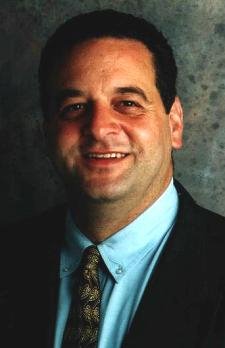Teachers hope to end slide - Marin IJ - Aug 2, 2005 - By Jennifer Gollan
Teachers hope to end slide
2 Tam High educators heading to Sausalito to battle drop-out rate
By Jennifer Gollan
www.marinij.com/news/ci_2907719
Tamalpais High School teachers will teach at a Sausalito/Marin City middle school this year in an effort to reverse a "concerning and pronounced" high school drop-out rate among minority students.
Two high school teachers from Tam High in Mill Valley will teach 26 eighth-graders English, math, and later, science at Martin Luther King Jr. Academy in Sausalito under an arrangement designed to boost academic achievement.
The Tamalpais Union High School District will provide the teachers to the Sausalito Marin City School District.
"The hope is that we are able to expose our children to the (teaching) methodology used by high school teachers and accelerate the academic progress of our children," said Rose Marie Roberson, superintendent of the Sausalito Marin City district. "By having two (Tam) teachers, we will be able to do that."
If successful, the program might be expanded to include seventh-graders in the 2006-07 school year.
Because the K-8 Sausalito Marin City district is a so-called "feeder district" for the Tamalpais district, most eighth-graders graduating from Sausalito Marin City's lone middle school attend Tam High.
In a trend that Tam District Superintendent Bob Ferguson said has been "ongoing for many years," of the 30 or so predominantly black students from King Academy who enroll each year at Tam High as ninth-graders, about half to two-thirds fail to graduate four years later.
By contrast, Tam High's average overall graduation rate is about 97 percent, Ferguson said.
"I think they sort of give up," Ferguson said. "If I was a black student coming into a predominantly all-white school, I would have some concerns. Then, if I sat in a classroom and realized I couldn't keep up, I would be even more concerned. You start looking for ways to drop out of school and look at continuation schools. We have a lot of students coming to us from Sausalito Marin City who are dropping out, transferring to other schools.
"It was so concerning and pronounced, it required an immediate fix," Ferguson said. "We can tell there is a problem because we look at the grades (of freshmen) in the first six weeks (of the year), so we need to find a way to address students' needs."
The two Tam High teachers will teach the equivalent of one English and math class each day in the fall term. In the spring semester, that schedule will likely be expanded to include a science class each day.
"They will increase some of the academic components to get these students more academically ready for the high school," Ferguson said.
Specifically, the teachers will work on "generally increasing the level of academic rigor for these students," Ferguson said.
"I think that they are rigorous, but they need to be more rigorous," Ruby Sullivan Wilson, principal of Martin Luther King Academy, said of her school's classes. "It is something that will be good for our students."
Among the skills the teachers will emphasize: note-taking, time management, testing practice and technology.
The Sausalito Marin City School District will pay $50,000 to $55,000 from the district's general fund this year for the program, which will cover part of the salaries of the two Tam High teachers, as well as collaboration on lesson plans by the teachers at the Tam and King schools.
Roberson explained that although the Sausalito Marin City District had raised its Academic Performance Index scores from 300 to 700 - out of 1,000 - over the past several years, the district was committed to boosting student achievement. In the past, the district had focused on teaching skills, but now, with state standardized tests increasingly concentrated on concepts, the district is shifting its curricula accordingly.
In addition, the district's students face unique academic challenges. Of the 285 students in the district, about 80 percent are from low-income households, and 25 to 35 percent move away or leave school for one reason or another each year, Roberson said.
"When you are in a high achieving district such as Tam, but when the background is different of the children, we need to look at things we can do - let's team-teach, so that they can better react to things high school teachers do."
George Stratigos, board president of the Sausalito Marin City district, said the district hadn't addressed the problem before because "it wasn't expected."
"But now it is, by the new board," he said. "Now we are doing whatever it takes, we're mending an entire system ... we are driving the issue of failure into success. This board is not going to stop. It comes down to training our teachers, strong administration."
AT A GLANCE
Tamalpais Union High School District
Low-income: 4 percent*
Enrollment: 3,908 students
Asian: 5 percent
Hispanic: 5 percent
Black: 4 percent
White: 80 percent
Other: 6 percent
Sausalito Marin City School District
Low-income: 55 percent*
Enrollment: 263
Asian: 4 percent
Hispanic: 16 percent
Black: 59 percent
White: 14 percent
Other: 7 percent
*As measured by the number of students enrolled in the districts' free or reduced price meal programs - a federal program administered by the U.S. Department of Agriculture. Program participation is based on the income of the child's parent or guardian.
SOURCE: California Department of Education 2004-05, the latest figures available


<< Home